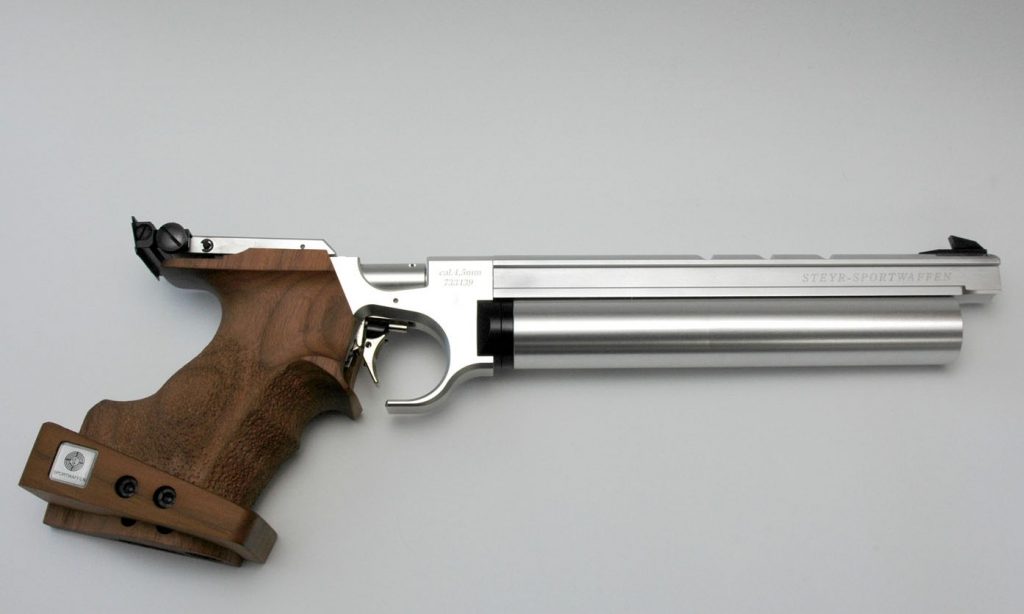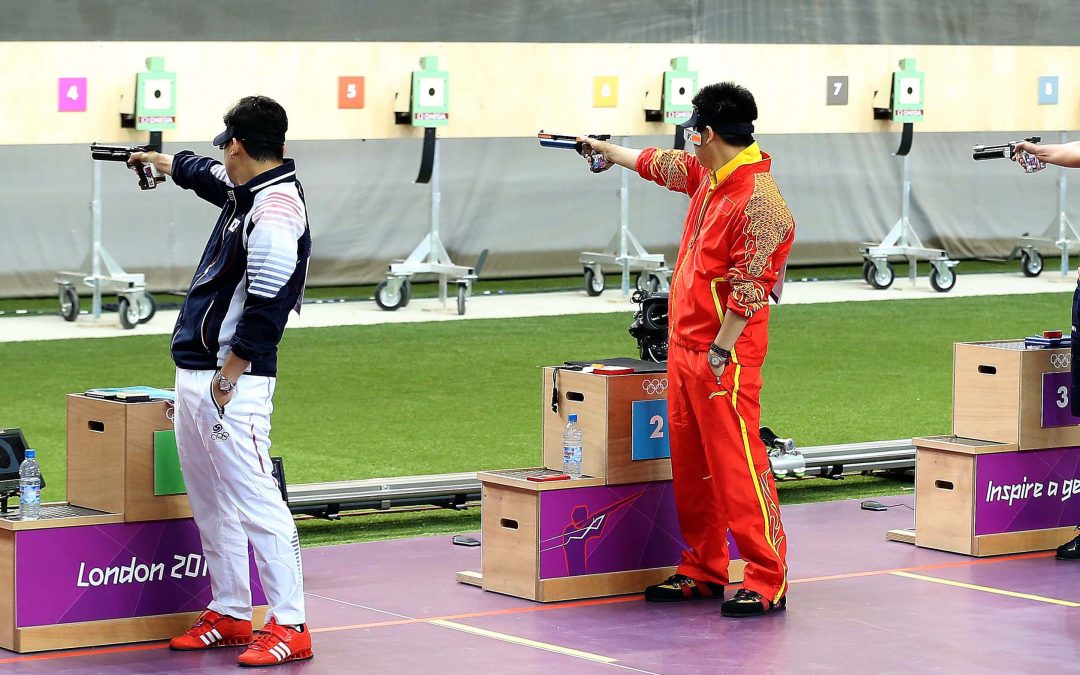So you started air gunning, shooting as a hobby in the back garden and you think you are pretty good at it. But how good do you have to be to get in the olympic team. What does it take to get from a hobbyist shooter to olympic stadium. How easy is it to go from a backyard shooter to Olympic champion, well it might be a little more complicated than you first though,
4 Qualities Of A Great Shooter
- Patience and practice. No it doesn’t happen overnight and if you want to be great at anything you need to practice. Ideally you need to shoot every single day.
- Mental strength. You have to have the belief that you can hit the bullseye every single shot. If it doesn’t then the awareness to understand what went wrong and correct it for the next shot
- Faith in yourself. Many people give up on the way to perfection, just believe and in time your skill will be honed
- Discipline, the event on the day can be draining both physically and mentally, you have to have the discipline to train and keep focused during competition
Join a Shooting Club
Unless you have a spare room 50m in length you need to join a club because shooting outside is completely different from indoor shooting. Also you learn a lot from the shooters and to become an olympic standard shooter we are talking minuscule measurements between winning and loosing, so no wind. This will also give you the opportunity to enter competitions to see how good you really are. Some clubs go from basic club competitions to Olympic standard, however, clubs offering Olympic standard completion are limited.
This means as you get better and better you will probably have to travel more to compete against the best.
Olympic airgun shooting features two types of guns, the air rifle and the air pistol In rifle and pistol events, athletes shoot at stationary targets at indoor shooting ranges.
All shooting is done from a preset distance — 10m, 25m, 50m — with athletes aiming for a bullseye on a paper target
The rifle is single-loaded in 5.6-millimetre calibre(.22) which is used across all events.
The pistol used in the 10m Air Pistol event is a single-loaded pistol in 4.5-millimetre calibre (.117), whereas the ones used in the 25m events is a Rapid Fire Pistol in 5.6 calibre (.22) with a five-shot magazine.
British Shooting
If you want to get into that Olympic team then you have to get involved with British shooting.
British Shooting is the only target shooting governing body in Great Britain recognised by the ISSF, WSPS, British Olympic Association, British Paralympic Association, UK Sport & Sport England.(source) If you want to start them young get them into a club and enter one of the British Shooting events. The junior completion is for school children starts for year 6 pupils (age 11) for 10m air pistol event.
Eligibility For Olympic Selection
Surprisingly even if your skill set at air gun shooting is up there with the best you have to meet the eligibility standards. These are put in place by a different governing body, UK Sport.
As the agency responsible for funding high performance sport in the UK, UK Sport takes its responsibility to promote high standards of conduct among our Olympic and Paralympic athlete and athlete support personnel population very seriously. (source)
The document is long and quite complicated in parts for eligibility, basically though you will be of good standing, have no criminal record and not do drugs. That means no recreational drugs or performance enhancing drugs.
Pellet Selection
Of course you want consistency and every barrel shoots a little differently and this can help decide which pellet you will go for. That said you want to use what has been tried and tested in major competitions. We recommend the following pellets.
- Rifle Premium Series Flat (comes in 3 different weights)
- QYS Olympic Pellets
Eligibility Criteria
- Holds a British Passport and is eligible to represent Great Britain under ISSF/WSPS rules and is eligible to compete for Team GB at the Olympic Games or ParalympicsGB at the Paralympic Games.
- Agrees to this WCP Selection Policy.
- Is a member of the relevant discipline governing body and holds valid firearms licences where appropriate.
- Is not currently serving a provisional or permanent suspension for a doping violation.
- Has signed the British Shooting Code of Conduct.
- Has not, whether by an act or omission, brought British Shooting into disrepute.
- Has not been disciplined by British Shooting for misconduct.
- Is not currently serving a period of ineligibility as a result of a transfer of allegiance.
Selection for the Olympic air gun team on your actual shooting ability.
- Performance in senior major tournaments in the last 12 months
- Performance trajectory since Jan 1st 2019 at recognised major competitions
- An athlete profile that reflects, in the view of the expert selection panel, the potential ability to frequently deliver future medal winning scores, convert finals into medals and demonstrates the ability to win a medal
Note that major tournaments are, World Championships, World Cups, European Championships and European Games.
How Do You Get Into The World Championship For Air Gun Competitions
This involves another organisation called the ISSF, International Shooting Sport Federation and competing in the ISSF World Cup Series.
The MQS (Minimum Qualification Score) is a minimum score that an athlete must have recorded at least once in the set timeframe, in order to become eligible to take part in the Olympic Games or in the Youth Olympic Games.
The Minimum Qualification Scores for each shooting event are designated by the ISSF.
The personal MQS (the Individual Qualification Score IQS) of each athlete are recorded through ISSF supervised shooting events, and each athlete willing to participate in the Olympic Games or in the Youth Olympic Games must record it before heading to the Games.
Olympic Games Qualification
Since 1988, the Olympic Qualification System of the Shooting Sport is based on two fundamentals: the Olympic Quota Places, and the Minimum Qualification Scores (MQS).
Each athlete, to be eligible to take part in the Olympic Games or in the Youth Olympic Games, needs an Olympic Quota Place, and must have obtained a Minimum Qualification Score at least once in the set timeframe.
Quota Places: |
||
|
||
MQS: |
||
|
As an example, the MQS for the 50m Rifle 3 Positions Men has been set to 1135 rings. An athlete willing to participate in the Games, must have scored at least 1135 rings during an ISSF supervised competition at least once in the set timeframe.

Shooting gear and equipment
As time goes on and you start competing at a higher level in the air gun competitions your equipment needs to upgrade, The biggest expense will be your air weapon of choice, expect to pay £1500 for an air pistol worthy of competition standards. A good competition air rifle could be £2000 plus.
Special jackets or coats are used by shooters to assist them while performing by offering stability. The surface of these special jackets is non-slippery and thus, ensure a better grip, especially for rifle shooters.
The extra-padding inside these jackets negates the effects of recoil, helping shooters improve their precision. The padding on the elbows provides a firm base, which is crucial for rifle shooters in the prone position.
Blinders are used to improve focus and block objects from distracting their vision. One front blinder of a prescribed width is allowed for shooters. However, only shotgun athletes are permitted to wear side blinders or blinkers.
Fun fact: Competition rules, Shoes, ankles must not be covered by the shoe, shoes are also subject to a flexibly test. Yes it is an actual rule.
Olympic Air Rifle: Events and shooting rules
In rifle shooting, athletes fire at a target with 10 concentric circles at a fixed distance. The event is further divided into two subcategories — 50m Rifle 3 Positions and 10m Air Rifle.
50m Rifle 3 Positions: Athletes shoot at the target from three different positions — kneeling, prone and standing. Each participant fires 40 shots in each of the three aforementioned positions within a timeframe of two hours and 45 minutes. The eight highest-scoring shooters move on to the medal round.
10m Air Rifle: Shooters fire 60 shots at the target within a timeframe of one hour and 15 minutes, following which, the eight highest-scoring shooters battle it out for the medals.
In addition to the men’s and women’s categories, the 10m Air Rifle also features a mixed team event consisting of one male and one female athlete. Each team member fires 40 shots at the target within 50 minutes in the qualification round, after which five teams qualify for the final round.
Olympic Air Pistol: Events and shooting rules
Pistol shooting features three subcategories – 25m Rapid Fire Pistol, 25m Pistol and 10m Air Pistol. Here, athletes have to shoot with one hand only, unsupported.
25m Rapid Fire Pistol: This is a men’s only event where shooters have to fire shots successively over short periods of eight, six and four seconds. The qualification round features two rounds of 30 shots each. Eight shooters with the best score qualify for the medal round.
25m Pistol: This is a women’s-only event, and like the 25m Rapid Fire Pistol event, features two qualifying rounds of 30 shots each.
10m Air Pistol: The rules of this event are a replica of the 10m Air Rifle. It features a men’s, women’s and mixed team category. Shooters in the solo categories fire 60 shots within a timeframe of one hour and 15 minutes before the top-eight move on to the medal round. In the mixed team event, each team member fires 40 shots and the five top-scoring teams slug it out for the overall honours.
Conclusion
Yes it possible to go from couch to Olympic air gun competitor but it takes a lot of practice and dedication. Thats without looking at the institutions complications of getting there. if you do start plinking in your back garden do consider the noise levels when you discharge your air rifle.

